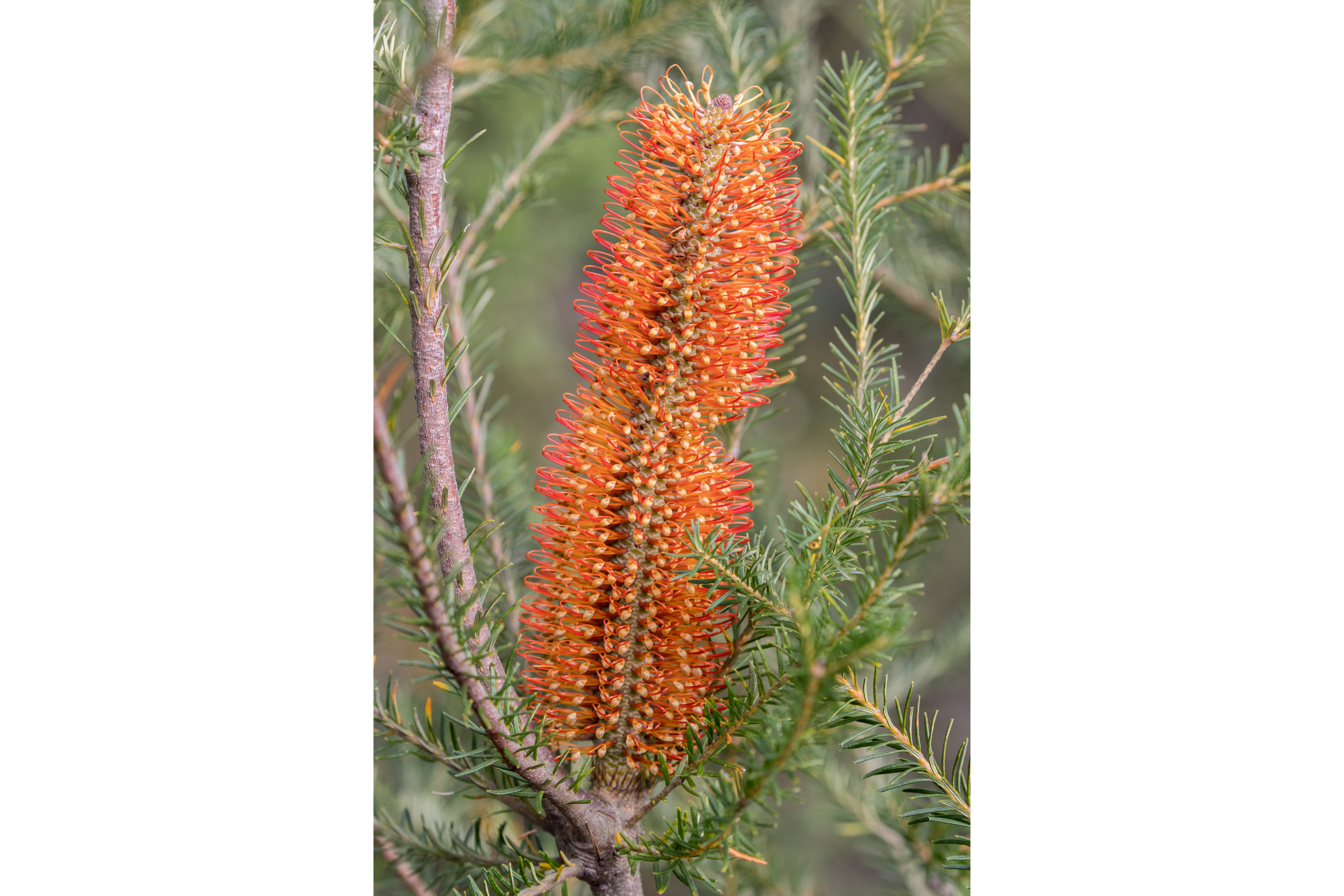Heath-leaved banksia
(Banksia ericifolia)

Description
Banksia ericifolia, the heath-leaved banksia, or lantern banksia, is a species of woody shrub of the family Proteaceae native to Australia. It grows in two separate regions of Central and Northern New South Wales east of the Great Dividing Range. Well known for its orange or red autumn inflorescences, which contrast with its green fine-leaved heath-like foliage, it is a medium to large shrub that can reach 6 m (20 ft) high and wide, though is usually half that size. In exposed heathlands and coastal areas it is more often 1–2 m (3.3–6.6 ft). Banksia ericifolia was one of the original Banksia species collected by Joseph Banks around Botany Bay in 1770 and was named by Carl Linnaeus the Younger, son of Carl Linnaeus, in 1782. A distinctive plant, it has split into two subspecies: Banksia ericifolia subspecies ericifolia of the Sydney region and Banksia ericifolia subspecies macrantha of the New South Wales Far North Coast which was recognized in 1996. Banksia ericifolia has been widely grown in Australian gardens on the east coast for many years, and is used to a limited extent in the cut flower industry. Compact dwarf cultivars such as Banksia 'Little Eric' have become more popular in recent years with the trend toward smaller gardens. Banksia ericifolia grows as a large shrub up to 6 metres (20 feet) in height, though often smaller, around 1–2 metres (3.5–6.5 ft), in exposed places such as coastal or mountain heathlands. The grey-coloured bark is smooth and fairly thin with lenticels; however it can thicken significantly with age. The linear dark green leaves are small and narrow, 9–20 mm (1⁄4–3⁄4 in) long and up to 1 mm wide, generally with two small teeth at the tips. The leaves are crowded and alternately arranged on the branches. New growth generally occurs in summer and is an attractive lime green colour. Flowering is in autumn, or in winter in cooler areas; the inflorescences are flower spikes 7–22 cm (2.8–8.7 in) high and 5 cm (2.0 in) broad or so. Each individual flower consists of a tubular perianth made up of four fused tepals, and one long wiry style. Characteristic of the taxonomic section in which it is placed, the styles are hooked rather than straight. The styles' ends are initially trapped inside the upper perianth parts, but break free at anthesis, when the flowers open.
Taxonomic tree:







